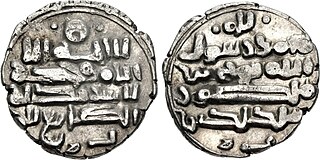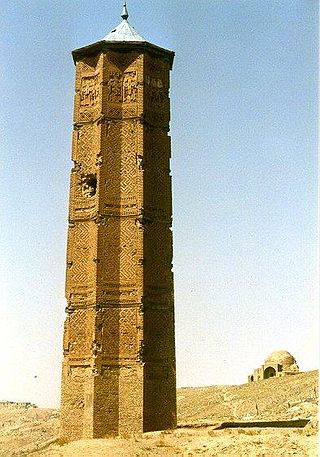
Abu Mansur Nasir ad-Din wa'd-Dawla Sabuktigin was the founder of the Ghaznavid dynasty, and amir of Ghazna from 977 to 997. Sabuktigin was a Turkic slave who was bought by Alp-Tegin, the commander of the royal guard of the Samanid dynasty. Alp-Tegin established himself as the governor of Ghazna in 962, and died a year later in 963. Afterwards, Sabuktigin built his prestige among other slave soldiers in Ghazna until he was elected by them as their ruler in 977.

Abu Salih Mansur, better known as Mansur I (منصور) was amir of the Samanids from 961 to 976. The son of Nuh I, his reign was characterized by weak rule and perpetual financial troubles. Mansur was notably the first Samanid ruler to the use title of King of Kings (Shahanshah), most likely as a response to his rival, the Buyid ruler Adud al-Dawla, who likewise used the title. He is also known by the sobriquet Amīr-i Sadid.

Falak al-Ma'ali Manuchihr, better known as Manuchihr, was the ruler of the Ziyarids. He was the son of Qabus.

Alp-Tegin, or Alptekin, was a Turkic slave commander of the Samanid Empire, who would later become the semi-independent governor of Ghazna from 962 until his death in 963.
The Al-i Muhtaj or Muhtajids was an Iranian or Iranicized Arab ruling family of the small principality of Chaghaniyan. They ruled during the 10th and early 11th centuries.

Chaghaniyan, known as al-Saghaniyan in Arabic sources, was a medieval region and principality located on the right bank of the Oxus River, to the south of Samarkand.

Abu Ali Ahmad Chaghani was the Muhtajid ruler of Chaghaniyan (939–955) and governor of Samanid Khurasan. He was the son of Abu Bakr Muhammad.
Abuʾl-Ḥasan al-Qāsim Aḥmad ibn Ḥasan Maymandī was a Persian vizier of the Ghaznavid ruler Mahmud of Ghazni and the latter's son Mas'ud I of Ghazni.
Simjur al-Dawati was a 10th-century Turkic general who served the Samanids. He was the founder of the Simjurid family which would play an important role in the Samanid Empire.
Abu Mansur Muhammad ibn 'Abd al-Razzaq ibn 'Abdallah ibn Farrukh, also simply known as Abu Mansur Muhammad and Ibn 'Abd al-Razzaq, was an Iranian aristocrat who served the Samanids during the most of career, and briefly served as governor of Azerbaijan under the Buyids.
Abu'l-Husain Abd-Allah ibn Ahmad Utbi, better known as Abu'l-Husain Utbi, was an Iranian statesman from the Utbi family, who served as the vizier of the Samanid ruler Nuh II from 977 to 982.
Mansur ibn Qara-Tegin, commonly known after his father as Ibn Qaratakin was a Turkic military officer of the Samanids in the mid-10th century.
Ibrahim ibn Simjur was a Samanid military officer from the Simjurid family.

Ali ibn Hasan, also known as Harun Bughra Khan and better known as Ali-Tegin was a Karakhanid ruler in Transoxiana from 1020 to 1034 with a brief interruption in 1024/25.
Böritigin, also known as Ibrahim ibn Nasr or Tamghach Khan Ibrahim, was a Karakhanid ruler in Transoxiana from 1038 to 1068. He was one of the greatest rulers of the dynasty.
Böritigin or Böri, also known as Pirai, was a Turkic officer, who served as the Samanid governor of Ghazna from 974/975 to 977.
Abu Bakr Lawik was a ruler of Ghazna from the Lawik dynasty. He was most likely a vassal of the Samanid Empire. In 962, the Turkic slave commander Alp-Tegin captured Ghazna after besieging the Citadel of Ghazni for four months. However, a few years later, Lawik managed to re-capture the town from Abu Ishaq Ibrahim, the son and successor of Alp-Tegin. This was not to last long; Abu Ishaq Ibrahim shortly returned to the town with Samanid aid, and took control of the town once again. Abu Bakr Lawik is thereafter no longer mentioned; he died before 977, the year that Ghaznavid control was established in Ghazna.

Ghazni is a city in southeastern Afghanistan, which served as the capital of the Ghaznavid Empire from 977 to 1163.

Bilgetegin was a Turkic officer, who was the Samanid governor of Ghazna from 12 November 966 to 975. He was successor of Abu Ishaq Ibrahim of Ghazna.